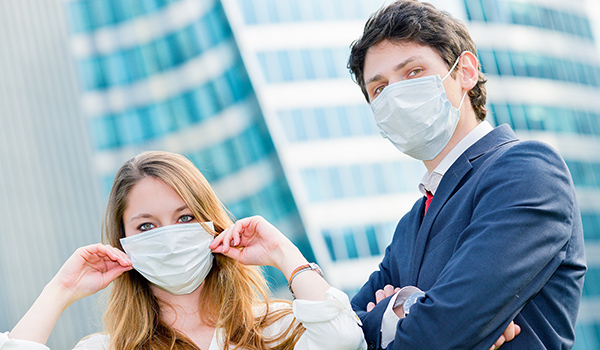
A cloth mask, a surgical mask or an N95 mask? Which mask is better to reduce the risk of SARS-COV-2 infection? In April 2020, the US Centers for Disease Control recommended that individuals wear facial coverings when they go into public spaces. As with any health recommendation, there has been a lot of argument about whether or not masks and facial coverings are effective against SAR-COV-2, the virus that causes COVID-19.
Recent research showed that droplets that could carry the virus can travel up to 12 feet between people. And so even with the six feet of social distancing that has been recommended both by the WHO and CDC, many people are at a high risk of getting infected by the virus.
Which is where masks and facial coverings come in. How do the masks help? People are making masks with everything from different types of fabric to wearing medical-grade N-95 masks.
Which mask or facial covering type is most effective?
For a long time, healthcare workers have worn masks to prevent droplet infections when working with patients with respiratory infections. Is a cloth mask as effective as the ones healthcare professionals wear, however?
In this post, we talk about the research that has explored this question.
Which mask is better?
A study published in the journal, Physics of Fluids on June 30 2020, tested different mask material and their effectiveness in preventing the movement of droplets. SARS-COV-2 is spread when the virus is carried in liquid droplets after a person coughs or sneezes.
The researchers tested the ability of the various materials to limit the movement of these droplets when a person coughs or sneezes.
They tested facial coverings made from:
- a bandana that was made out of elastic T-shirt material
- A folded cotton handkerchief
- A stitched mask made from cotton quilting material
- A non-sterile commercially-available mask that the researchers stated “is available in most pharmacies”
The researchers found that the facial covering made from the bandana was the least effective in preventing the spread of respiratory droplets. In fact, droplets that were released through a bandana still traveled an average of 3 feet and 7 inches.
Without any facial covering, droplets traveled an average of 8 feet. Thus, although having a bandana facial covering is better than nothing, it is not the best material to use for preventing the spread of virus-containing droplets.
When the mask was made from a folded handkerchief (folded as recommended by the US Surgeon General), the droplets traveled an average of 1 foot and 3 inches.
When the researchers tested a mask made from two layers of cotton quilting material (containing 70 threads per inch), the droplets only traveled 2.5 inches. Lastly, using the non-sterile face mask from the pharmacy, droplets traveled 8 inches outside of the mask before they were dispersed.
The results of this study highlighted that:
- Wearing a facial covering is better than not wearing one at all when it comes to stopping the spread of virus-containing droplets.
- The material used for a mask or facial covering matters. In this case, the mask made from two layers of quilting material was the most effective in preventing the movement of potentially infectious droplets.
How about surgical and N95 masks?
How effective are surgical and N95 masks against SARS-COV-2? N95 masks are respirator masks and they are designed to block out 95% of very small air particles. In order for them to be effective, an N95 mask has to be specifically fitted to your face.
Thus wearing one that is not fitted to your face will not prove helpful at all. They are commonly used by healthcare workers.
Surgical or medical masks are loose-fitting disposable masks. These masks filter out larger air particles. According to this study, surgical masks have a varying filtering efficacy that ranges anywhere from 10-90% of particles in the air.
There are several unsealed portions of a surgical mask which would put someone working in close proximity with COVID-19 patients at risk for becoming infected. However, if you don’t work in such high-risk environments, a surgical mask could still be useful in limiting droplets from one person to another.
Avoid improper face mask use
It is possible to use masks and facial coverings the wrong way and thus still make an effective mask, ineffective.
So what should you be doing when you wear a mask?
- Wash your hands before and after using a face mask.
- If you use disposable masks, it is not advisable to keep reusing them.
- Don’t touch your mask – especially the front of it – while wearing it.
- If you use a cloth one, wash it frequently (at least every 3 days). This will prevent it from becoming an incubator for viruses and other airborne microbes. Put any soiled masks in a sealable bag until you can wash them.
- It should cover your nose and mouth.
- When you take it off, take it off carefully and be careful not to touch the front k.
Conclusion
Research shows that there are face masks and facial covering material that are in fact better than others. The bottom line, however, is that some type of facial covering is better than none during this pandemic.
If you have anxiety about wearing masks during this time, we recommend you speak with your doctor and/or a mental health professional.

